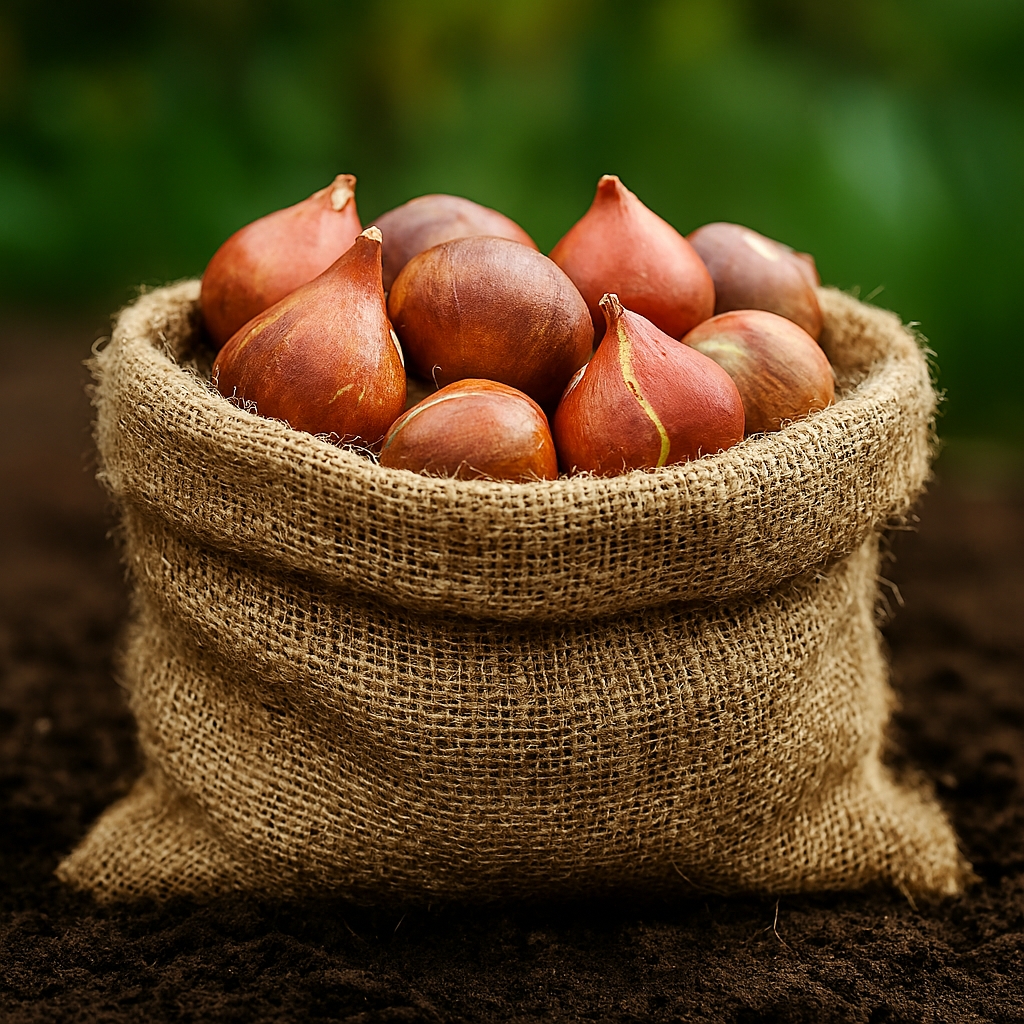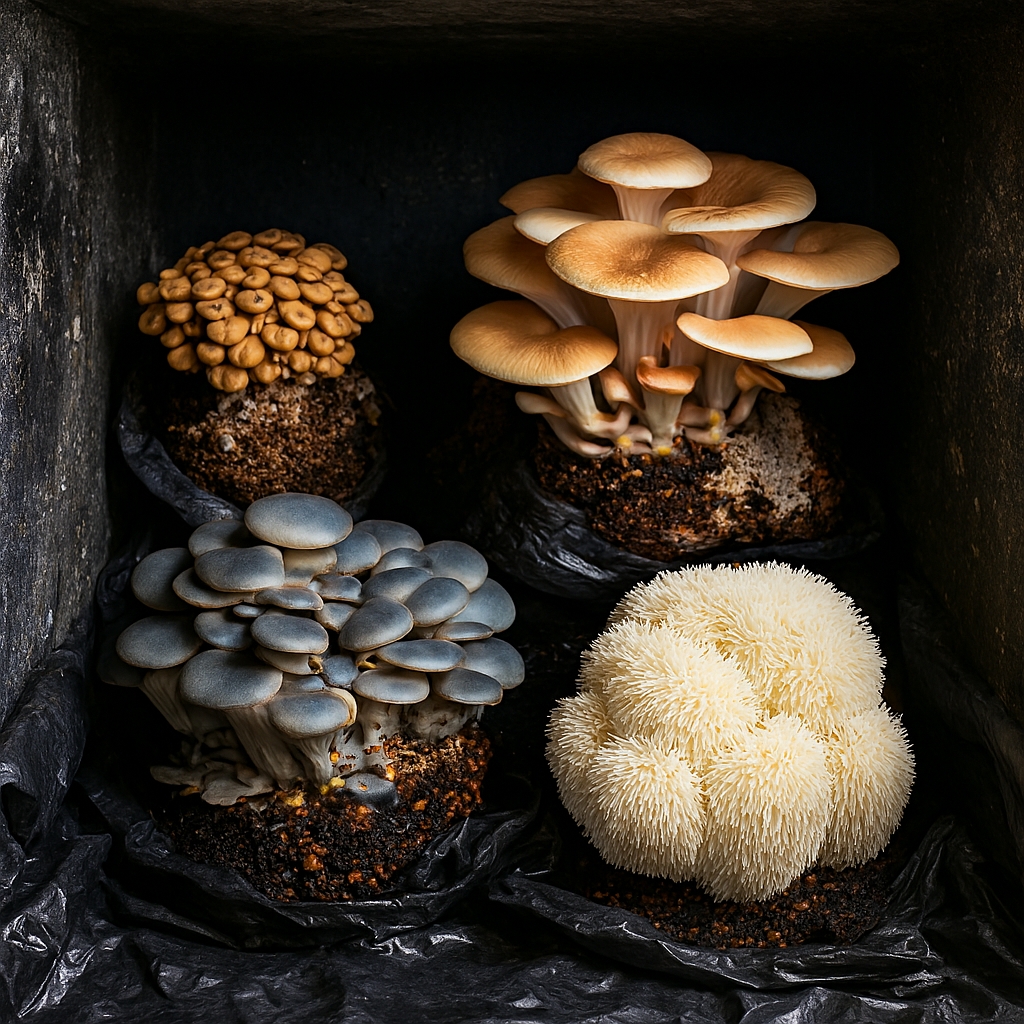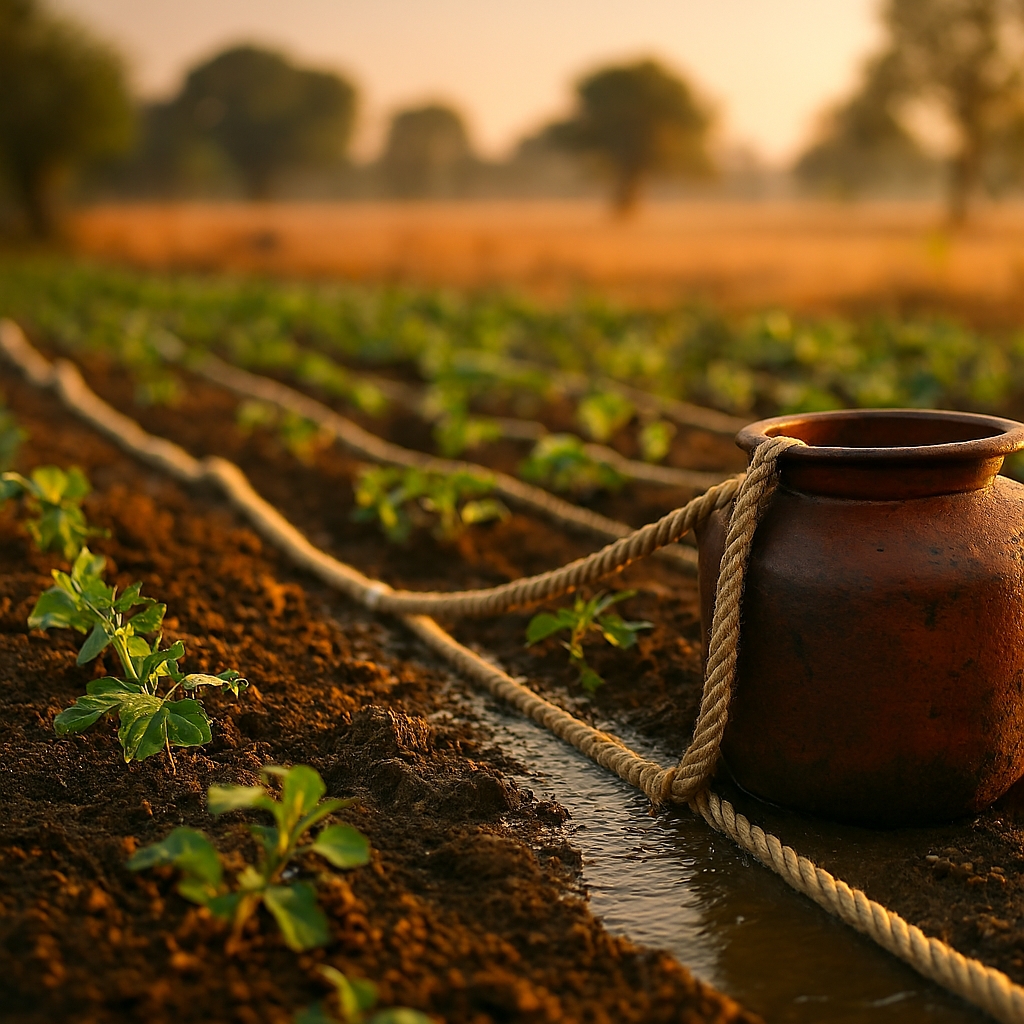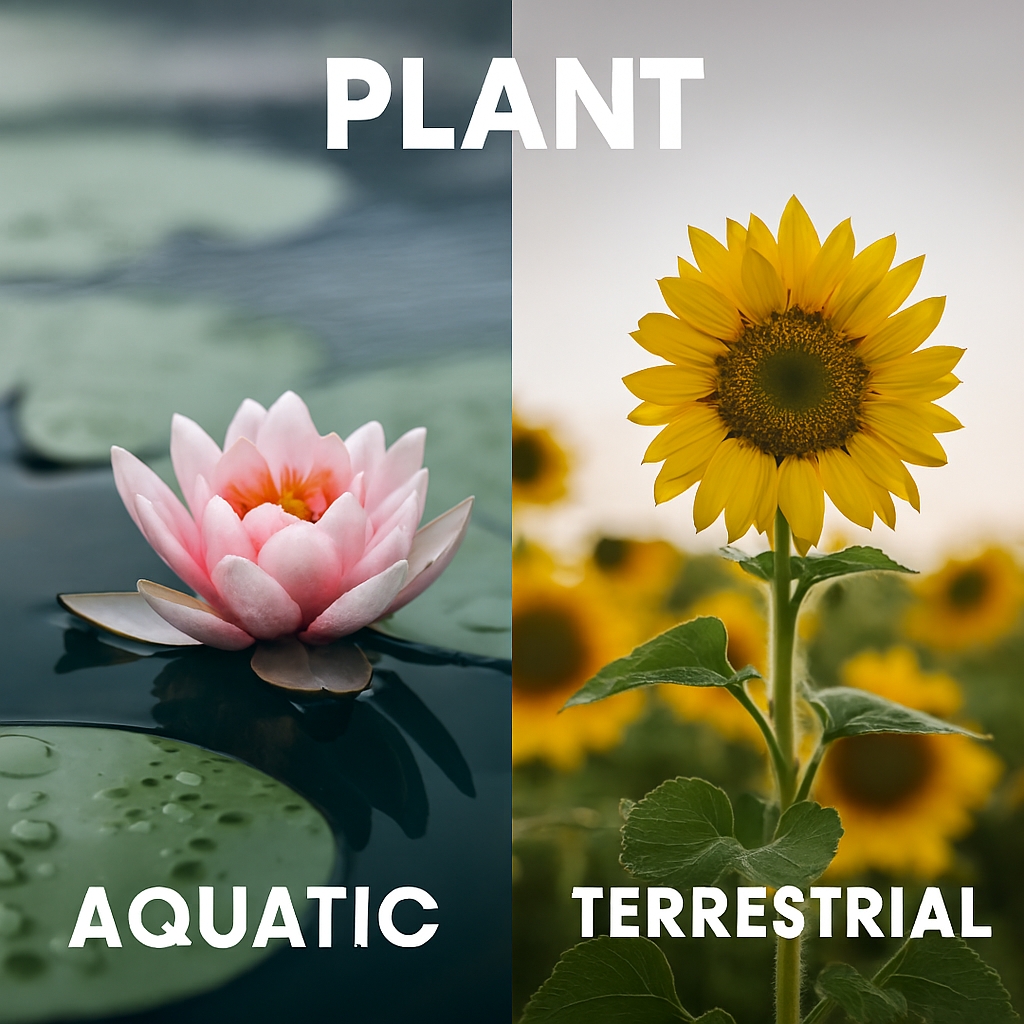Plants Flower More When Stressed – Reproduction Under Pressure
Plants are masters of adaptation but do Plants Flower More When Stressed. When faced with environmental stress—whether drought, heat, nutrient scarcity, or physical damage—they often accelerate their reproductive cycle. This phenomenon, known as stress-induced flowering, allows plants to secure their genetic legacy before conditions become too hostile. Rather than waiting for ideal circumstances, they shift energy from growth to reproduction, producing flowers and seeds in a final push for survival. This behavior is especially common in annuals and short-lived perennials, but it can also occur in longer-lived species under extreme duress. The biological mechanisms behind this response involve hormonal shifts, genetic triggers, and environmental sensing. Stress-induced flowering is not a malfunction—it is a calculated evolutionary strategy. Understanding this process reveals insights into plant resilience, ecological balance, and agricultural adaptation. It also invites reflection on how life responds to adversity with urgency, beauty, and purpose.

Environmental Stressors And Floral Response – A Comparative Overview
Plants encounter a wide range of stressors, each capable of influencing their flowering behavior. These stressors can be abiotic, such as drought and temperature extremes, or biotic, such as pathogens and herbivory. The table below outlines key stress types, their physiological impact, and how they affect flowering.
| Stress Type | Example Condition | Hormonal Response | Flowering Impact |
|---|---|---|---|
| Drought | Water scarcity | ↑ Abscisic acid | Accelerated flowering |
| Cold | Frost or chill | ↑ Gibberellins | Mimics vernalization |
| Salinity | High salt levels | ↑ Ethylene | Emergency bloom |
| Light fluctuation | Shade or excess light | ↓ Auxins | Disrupted timing |
| Pathogens | Fungal infection | ↑ Salicylic acid | Defense-linked flowering |
| Herbivory | Leaf damage | ↑ Jasmonic acid | Reproductive urgency |
These stressors interact with genetic predispositions and environmental timing, creating a complex matrix of survival strategies. The ability to flower under stress is different in each situation and not universal—it varies by species, life cycle, and ecological niche.
Hormonal Signals That Trigger Bloom – Internal Chemistry Of Survival
Plants rely on a network of hormones to interpret and respond to stress. These chemical messengers regulate growth, defense, and reproduction. When stress intensifies, hormonal shifts prioritize flowering over vegetative expansion. The following points highlight how key hormones influence stress-induced flowering:
- Abscisic acid rises during drought, signaling the need to conserve water and initiate reproduction.
- Gibberellins promote floral development and are modulated by temperature and light cues.
- Ethylene, often associated with aging, can trigger flowering under salinity or mechanical damage.
- Cytokinins influence cell division and may accelerate reproductive transitions under nutrient stress.
- Auxins guide growth direction and are redistributed during light or mechanical stress, affecting flower placement.
- Jasmonic acid, linked to defense, intersects with flowering pathways during herbivore attacks.
- Salicylic acid, known for pathogen resistance, also plays a role in bloom timing.
- Hormonal balance shifts under prolonged stress, tipping the scale toward reproduction.
- Feedback loops among hormones regulate the intensity and timing of flowering.
- Species-specific hormonal sensitivity determines how each plant responds to environmental cues.
These hormonal interactions form the biochemical foundation of stress-induced flowering, translating external threats into internal urgency.
Genetic Pathways Of Stress-Induced Flowering – Molecular Triggers And Variability
Plants possess intricate genetic systems that interpret environmental signals and translate them into developmental changes. Stress-induced flowering is governed by specific genes that regulate the transition from vegetative growth to reproduction. These genes respond to hormonal cues and external stimuli, activating floral meristems under duress. The table below outlines key genetic components involved in stress-responsive flowering and their functional roles.
| Gene Name | Function | Stress Trigger | Impact On Flowering |
|---|---|---|---|
| FLOWERING LOCUS T | Promotes floral transition | Drought, photoperiod | Accelerated blooming |
| CONSTANS | Regulates light-dependent cues | Light fluctuation | Timed floral induction |
| GIGANTEA | Circadian rhythm integration | Temperature shifts | Seasonal flowering |
| TWIN SISTER OF FT | Drought-responsive expression | Water scarcity | Emergency bloom |
| APETALA1 | Floral organ identity | Hormonal imbalance | Flower structure formation |
| SUPPRESSOR OF OVEREXPRESSION OF CONSTANS1 | Represses early flowering | Nutrient stress | Delayed bloom |
These genes operate within feedback loops and interact with epigenetic modifiers. DNA methylation and histone acetylation can silence or activate flowering genes depending on stress intensity. MicroRNAs also fine-tune gene expression, ensuring that flowering occurs only when survival is at stake. Genetic diversity across species and cultivars influences how plants respond to stress, making this pathway a key target for crop improvement and ecological forecasting.
Ecological Benefits Of Stress-Responsive Blooming – Timing And Territory
Stress-induced flowering is not merely a physiological reaction—it is an ecological strategy. Plants that flower under duress often gain competitive advantages in resource-limited environments. The following points highlight how this behavior supports ecological resilience and species survival:
- Early flowering allows plants to complete reproduction before conditions worsen.
- Stress-responsive blooming reduces competition for pollinators during peak adversity.
- Flowering after fire or drought exploits reduced canopy cover and increased light availability.
- Rapid seed production ensures genetic continuity in unpredictable climates.
- Species that bloom under stress often colonize disturbed or marginal habitats.
- Stress-induced flowering can synchronize with brief seasonal windows, such as post-rainfall in deserts.
- This strategy supports biodiversity by enabling niche specialization.
- Plants that flower under stress contribute to ecosystem recovery after disturbance.
- Stress-responsive species often serve as pioneer organisms in succession cycles.
- Ecological timing of flowering influences pollinator behavior and seed dispersal dynamics.
These adaptive benefits demonstrate how stress-induced flowering is woven into the fabric of ecological systems, shaping plant communities and landscape evolution.
Species-Specific Floral Strategies Under Stress – Diversity In Response
Different plant species exhibit unique responses to stress, shaped by their evolutionary history and ecological niche. Some flower rapidly under mild stress, while others require extreme conditions to trigger reproduction. The table below compares species-specific strategies and their typical stress responses.
| Plant Type | Example Species | Common Stress Trigger | Flowering Behavior |
|---|---|---|---|
| Annual | Marigold | Drought | Accelerated flowering |
| Perennial | Lavender | Cold | Dormancy or delayed bloom |
| Desert Plant | Ocotillo | Rain after drought | Rapid flowering |
| Alpine Species | Edelweiss | Frost | Short-season blooming |
| Tropical Plant | Hibiscus | Light fluctuation | Photoperiod-dependent |
| Crop Cultivar | Wheat | Nutrient stress | Controlled flowering |
| Wildflower | Fireweed | Post-fire disturbance | Opportunistic blooming |
| Succulent | Aloe vera | Water scarcity | Stress-triggered bloom |
| Grassland Herb | Goldenrod | Competition | Early reproductive shift |
| Urban Pioneer | Dandelion | Soil compaction | Persistent flowering |
Understanding these species-specific responses is essential for conservation, agriculture, and climate adaptation. It allows for targeted planting strategies, breeding programs, and ecological restoration efforts that align with environmental stress patterns.
Physiological Trade-Offs Of Stress-Induced Flowering – Costs And Calculations
While flowering under stress offers survival benefits, it also involves trade-offs. Plants must reallocate resources from growth and defense to reproduction, which can compromise long-term viability. The following points explore the physiological costs and strategic calculations behind this shift:
- Stress-induced flowering often results in smaller, fewer, or less viable seeds.
- Energy diverted to reproduction reduces vegetative growth and root expansion.
- Defense mechanisms may be weakened, increasing vulnerability to pathogens and herbivores.
- Photosynthetic efficiency can decline as leaves senesce prematurely.
- Nutrient uptake may be impaired due to reduced root activity.
- Flowering under stress can shorten lifespan in perennials.
- Seed dispersal may be less effective if flowering is mistimed.
- Pollinator availability may be limited during stress events.
- Reproductive success depends on synchrony with environmental recovery.
- Plants balance immediate reproduction with future survival potential.
These trade-offs reflect the delicate calculus plants perform under pressure, weighing the urgency of reproduction against the risks of resource depletion.
Cultural Symbolism Of Blooming Under Stress – Metaphors In Nature
Across cultures, the image of a flower blooming under harsh conditions carries deep symbolic meaning. It represents resilience, hope, and the beauty of persistence. The table below explores how different traditions interpret stress-induced flowering and its metaphorical significance.
| Culture/Tradition | Symbolic Flower | Stress Context | Metaphorical Meaning |
|---|---|---|---|
| Japanese | Cherry Blossom | Spring frost | Ephemeral beauty, renewal |
| Chinese | Plum Blossom | Winter bloom | Perseverance, purity |
| Indigenous Australian | Kangaroo Paw | Arid bloom | Adaptation, sacred cycles |
| Persian | Rose | Desert flowering | Love, endurance |
| Western Romanticism | Wildflower | Rocky soil | Freedom, defiance |
| Buddhist | Lotus | Muddy water | Enlightenment, emergence |
| African folklore | Baobab flower | Dry season bloom | Wisdom, survival |
| Hindu tradition | Marigold | Ritual stress | Transformation, offering |
| Latin American | Passionflower | Heat and drought | Sacrifice, spiritual bloom |
| Nordic myth | Edelweiss | Alpine frost | Courage, rarity |
These symbolic associations enrich our understanding of stress-induced flowering, linking ecological behavior to human narratives of strength and transformation.

Adaptive Timing And Environmental Sensing – Precision In Bloom
Plants do not flower under stress arbitrarily. Their response is calibrated to environmental timing and internal readiness. The following points outline how plants sense and interpret stress to initiate flowering:
- Photoreceptors detect changes in light quality and duration.
- Thermosensors monitor temperature fluctuations and seasonal cues.
- Water potential sensors assess drought severity and soil moisture.
- Salinity sensors measure ion concentration and osmotic stress.
- Mechanical receptors detect physical damage or pressure.
- Circadian clocks align flowering with daily and seasonal rhythms.
- Hormonal thresholds determine readiness for reproductive shift.
- Signal transduction pathways relay stress signals to genetic regulators.
- Environmental memory influences future flowering decisions.
- Plants integrate multiple signals to optimize bloom timing.
This precision ensures that flowering under stress is not random but a strategic response to maximize reproductive success.
Agricultural Implications Of Stress-Induced Flowering – Crop Management And Yield
In agricultural systems, stress-induced flowering presents both challenges and opportunities. Farmers must navigate the fine line between encouraging timely bloom and preventing premature reproductive shifts that reduce yield. The table below outlines how different stressors affect common crops and what management strategies can mitigate negative impacts.
| Crop Type | Common Stress Trigger | Flowering Response | Management Strategy |
|---|---|---|---|
| Wheat | Nutrient deficiency | Early flowering | Balanced fertilization |
| Tomato | Heat stress | Reduced fruit set | Shade netting, irrigation |
| Rice | Drought | Accelerated panicle emergence | Controlled water release |
| Soybean | Salinity | Flower abortion | Soil flushing, salt-tolerant varieties |
| Maize | Light fluctuation | Asynchronous tasseling | Uniform planting density |
| Strawberry | Cold snap | Delayed bloom | Frost protection, row covers |
| Sunflower | Herbivory | Emergency flowering | Pest control, companion planting |
| Lettuce | Heat spike | Bolting | Timed harvest, cool-season scheduling |
| Cotton | Water stress | Reduced boll formation | Drip irrigation, mulching |
| Grapevine | Pathogen pressure | Stress bloom | Fungicide rotation, canopy management |
These strategies reflect the need for precision agriculture—monitoring environmental conditions, adjusting inputs, and selecting resilient cultivars. By understanding how stress influences flowering, growers can better predict harvest timing, optimize resource use, and safeguard food security.
Evolutionary Logic Behind Stress-Responsive Blooming – Survival Over Perfection
Stress-induced flowering is a product of evolutionary pressure. In unpredictable environments, waiting for ideal conditions can be fatal. Plants that flower under stress secure their lineage by reproducing before collapse. The following points explore the evolutionary rationale behind this behavior:
- Natural selection favors traits that ensure reproductive success under adversity.
- Annuals evolved to complete their life cycle quickly, often blooming in response to stress.
- Perennials may delay flowering unless stress threatens long-term survival.
- Stress-induced flowering increases genetic diversity through rapid seed dispersal.
- Plants in fire-prone ecosystems flower post-disturbance to exploit reduced competition.
- Desert species synchronize flowering with rare rainfall events, maximizing pollination.
- Alpine plants bloom during short windows between frost events, ensuring seed set.
- Evolution has fine-tuned hormonal and genetic pathways to respond to environmental cues.
- Species with flexible flowering responses adapt better to climate variability.
- Stress-induced flowering contributes to ecosystem resilience and succession dynamics.
This evolutionary strategy underscores the intelligence embedded in plant systems—balancing risk, timing, and reproduction to persist across generations.
Atmospheric Conditions And Floral Timing – Climate Signals And Bloom Patterns
Atmospheric variables play a crucial role in stress-induced flowering. Plants monitor temperature, humidity, light intensity, and carbon dioxide levels to determine bloom timing. The table below compares key atmospheric factors and their influence on flowering behavior.
| Atmospheric Factor | Stress Condition | Plant Response | Flowering Outcome |
|---|---|---|---|
| Temperature | Heat wave | Heat shock protein activation | Early bloom or flower drop |
| Humidity | Low humidity | Increased transpiration | Accelerated flowering |
| Light intensity | Excessive sunlight | Photoinhibition | Disrupted floral timing |
| CO₂ concentration | Elevated levels | Enhanced photosynthesis | Potential bloom stimulation |
| Wind | High wind stress | Mechanical damage | Emergency flowering |
| UV radiation | Increased exposure | DNA damage response | Stress-linked bloom |
| Air pollutants | Ozone, sulfur dioxide | Oxidative stress | Reduced floral viability |
| Barometric pressure | Rapid drops | Storm anticipation | Defensive flowering |
| Rainfall pattern | Irregular precipitation | Drought-flood cycles | Opportunistic blooming |
| Seasonal shifts | Unpredictable seasons | Circadian disruption | Mistimed flowering |
These atmospheric cues are integrated by plant sensory systems, allowing for precise reproductive timing. As climate patterns shift, understanding these relationships becomes vital for forecasting bloom cycles and managing ecological and agricultural systems.
Seed Viability And Stress Blooming – Quality Over Quantity
Flowering under stress often results in fewer seeds, but those seeds may be more resilient. Plants prioritize quality over quantity, ensuring that offspring can survive in similar harsh conditions. The following points explore how stress affects seed viability and reproductive success:
- Stress-induced seeds often exhibit enhanced dormancy, delaying germination until favorable conditions return.
- Hormonal priming during stress can improve seedling vigor and drought tolerance.
- Reduced seed number concentrates resources, increasing individual seed survival.
- Stress conditions may trigger epigenetic changes that persist across generations.
- Seeds from stressed plants may have thicker coats, aiding in protection and dispersal.
- Germination timing may be synchronized with environmental recovery periods.
- Pollination under stress can lead to greater genetic mixing, enhancing adaptability.
- Seed dispersal mechanisms may be activated by stress cues (e.g., wind, fire).
- Plants may produce seeds with specialized traits suited to post-stress environments.
- Seed banks in soil benefit from stress-induced diversity, supporting long-term ecosystem resilience.
This reproductive strategy ensures that even in adversity, plants invest in the future with precision and foresight.
Pollination Dynamics Under Stress Blooming – Timing, Vectors, And Viability
Stress-induced flowering alters the landscape of pollination. When plants bloom under duress, they may shift their timing, morphology, or chemical signaling to attract pollinators in suboptimal conditions. The table below outlines how stress affects pollination strategies and outcomes.
| Pollination Factor | Stress Influence | Floral Adaptation | Ecological Consequence |
|---|---|---|---|
| Timing | Early or late bloom | Shifted anthesis period | Pollinator mismatch risk |
| Scent | Reduced volatile output | Altered fragrance profile | Lower pollinator attraction |
| Nectar | Limited production | Concentrated sugar content | Selective pollinator access |
| Color | Pigment degradation | Faded or altered hues | Visual signal disruption |
| Shape | Smaller or deformed | Reduced landing platforms | Pollination efficiency decline |
| Quantity | Fewer flowers | Resource allocation shift | Lower reproductive output |
| Synchrony | Desynchronized blooming | Individualistic timing | Reduced cross-pollination |
| Vector reliance | Increased wind use | Reduced animal dependence | Broader dispersal range |
| Pollen viability | Heat or drought damage | Reduced germination success | Fertility loss |
| Floral lifespan | Shortened duration | Rapid senescence | Narrow pollination window |
These changes reflect the tension between urgency and viability. Plants blooming under stress must attract pollinators quickly, often with fewer resources and less time. This dynamic reshapes ecological relationships and reproductive success.

Urban Ecology And Stress Flowering – Resilience In The Concrete Wild
Urban environments present a unique blend of stressors—pollution, heat islands, soil compaction, and fragmented habitats. Yet many plants thrive in cities by flowering under pressure. The following points explore how stress-induced blooming manifests in urban ecology:
- Pavement heat accelerates flowering in roadside and median strip plants.
- Soil compaction limits root growth due to density, prompting early reproductive shifts.
- Air pollution alters hormonal balance, triggering emergency bloom cycles.
- Fragmented green spaces create competition, leading to opportunistic flowering.
- Urban light pollution disrupts circadian rhythms, affecting floral timing.
- Noise and vibration stress can influence flowering in sensitive species.
- Stormwater runoff creates salinity spikes, prompting bloom in tolerant plants.
- Urban flora often includes pioneer species with high stress adaptability.
- Rooftop and balcony gardens simulate micro-stress environments, encouraging bloom.
- Stress-induced flowering supports pollinators in cities, enhancing biodiversity corridors.
These adaptations reveal how plants transform adversity into opportunity, turning concrete jungles into blooming ecosystems.
Genetic Engineering And Stress Blooming – Designing Resilient Flora
Biotechnologists are exploring how to harness stress-induced flowering for crop improvement and ecological restoration. By manipulating genes and hormonal pathways, scientists can design plants that bloom under specific stress conditions. The table below outlines current genetic engineering approaches and their applications.
| Engineering Target | Modified Trait | Stress Trigger | Intended Benefit |
|---|---|---|---|
| FLOWERING LOCUS T | Early floral induction | Drought | Seed production under scarcity |
| CONSTANS | Light sensitivity tuning | Photoperiod disruption | Controlled bloom timing |
| DREB transcription factor | Stress response amplification | Salinity, heat | Enhanced resilience |
| ABA biosynthesis | Hormonal regulation | Water stress | Timed flowering and closure |
| CRISPR edits in APETALA1 | Floral organ control | Mechanical damage | Structural bloom integrity |
| Epigenetic switches | Reversible gene expression | Temperature extremes | Seasonal bloom modulation |
| Synthetic promoters | Targeted gene activation | Specific stressors | Precision flowering control |
| RNA interference | Gene silencing | Pathogen pressure | Defensive bloom timing |
| Transgenic hybrids | Cross-species resilience | Multiple stressors | Broad-spectrum adaptability |
| Floral scent biosynthesis | Pollinator attraction | Urban pollution | Enhanced ecological signaling |
These innovations aim to balance productivity with resilience, allowing plants to bloom strategically in changing climates and degraded landscapes.
Philosophical Reflections On Blooming Under Pressure – Lessons From Flora
The phenomenon of stress-induced flowering invites deeper reflection. It challenges assumptions about growth, timing, and beauty. The following points explore philosophical insights drawn from plants that bloom under duress:
- Blooming under stress reveals the urgency of life’s purpose in the face of adversity.
- Plants prioritize reproduction over perfection, valuing continuity over aesthetics.
- Stress-induced flowering embodies resilience—thriving not despite hardship, but because of it.
- The timing of bloom under pressure reflects intuitive wisdom, not reactive panic.
- Floral emergence in hostile conditions mirrors human creativity in crisis.
- Nature teaches that survival often requires sacrifice and strategic surrender.
- The fleeting beauty of stress blooms evokes the poignancy of impermanence.
- Plants do not wait for ideal conditions—they act when survival demands it.
- Blooming under pressure is a metaphor for transformation through constraint.
- The floral response to stress invites us to reconsider our own thresholds for growth.
These reflections position stress-induced flowering not just as a biological event, but as a symbolic gesture of persistence, adaptation, and grace.
Soil Conditions And Stress Blooming – Subsurface Signals And Floral Response
Soil is more than a substrate—it’s a dynamic system that communicates stress to plants. Compaction, nutrient imbalance, and microbial shifts can all trigger flowering. The table below outlines how soil conditions influence stress-induced bloom and what adaptations plants employ.
| Soil Factor | Stress Condition | Plant Response | Flowering Outcome |
|---|---|---|---|
| Compaction | Limited root expansion | Reduced vegetative growth | Accelerated flowering |
| Nutrient deficiency | Low nitrogen or phosphorus | Hormonal shift to reproduction | Early bloom |
| pH imbalance | Acidic or alkaline soil | Ion uptake disruption | Emergency flowering |
| Salinity | High salt concentration | Osmotic stress | Stress-triggered bloom |
| Microbial imbalance | Loss of symbiotic fungi | Reduced nutrient exchange | Reproductive urgency |
| Waterlogging | Anaerobic conditions | Root stress | Premature flowering |
| Drought | Dry soil profile | ABA spike | Floral induction |
| Soil erosion | Loss of topsoil | Exposure of root systems | Defensive flowering |
| Heavy metals | Toxic accumulation | DNA damage response | Reduced floral viability |
| Organic matter loss | Depleted humus | Energy reallocation | Opportunistic blooming |
These subsurface stressors shape plant behavior from the root upward. Flowering becomes a signal not just of survival, but of soil health and ecological balance.
Reproductive Morphology Under Stress – Form, Function, And Urgency
Stress-induced flowering often alters the physical structure of reproductive organs. These changes reflect a shift in priorities—from attracting pollinators to ensuring seed set. The following points explore how morphology adapts under pressure:
- Flowers may be smaller, conserving energy while still enabling reproduction.
- Petal number and symmetry can be reduced, affecting visual appeal but not function.
- Stamens and pistils may elongate to increase pollination chances in low-wind or low-insect conditions.
- Nectar glands may shrink or concentrate sugars to attract fewer but more efficient pollinators.
- Sepals may thicken to protect reproductive tissues from environmental damage.
- Floral color may fade or shift due to pigment degradation under heat or drought.
- Inflorescence architecture may simplify, reducing branching and floral density.
- Seed pods may form earlier, bypassing extended floral phases.
- Floral lifespan shortens, prioritizing rapid pollination and seed development.
- Morphological plasticity ensures that reproduction occurs even when ideal conditions are absent.
These structural shifts embody the urgency of survival, transforming bloom into a minimalist act of resilience.
Climate Adaptation And Stress Blooming – Regional Patterns And Forecasting
As global climates shift, stress-induced flowering becomes a key indicator of ecological change. Plants respond to altered rainfall, temperature, and seasonal rhythms with modified bloom behavior. The table below compares regional climate patterns and their influence on stress-responsive flowering.
| Region | Dominant Climate Stress | Typical Floral Response | Adaptive Strategy |
|---|---|---|---|
| Australian Outback | Drought, heat | Rapid post-rain blooming | Seed dormancy, deep roots |
| Arctic Tundra | Frost, short seasons | Compressed flowering window | Cold-tolerant genetics |
| Mediterranean Basin | Summer drought | Spring flowering surge | Seasonal timing optimization |
| Southeast Asia | Monsoon variability | Opportunistic bloom cycles | Rain-triggered induction |
| North American Plains | Heat waves, wind | Early bloom, wind pollination | Structural resilience |
| Amazon Rainforest | Light fluctuation | Canopy gap flowering | Shade-adapted signaling |
| Middle East | Salinity, aridity | Emergency flowering | Salt-tolerant physiology |
| Alpine Europe | Altitude frost | Short-season bloom | Vernalization mimicry |
| Sub-Saharan Africa | Soil erosion, drought | Opportunistic flowering | Deep-rooted dispersal systems |
| Urban Global Zones | Pollution, heat islands | Persistent stress bloom | Pioneer species dominance |
These regional adaptations reflect how plants use stress-induced flowering as a tool for climate resilience and ecological continuity.
Symbolic Storytelling Through Stress Blooming – Cultural Narratives And Meaning
Beyond biology, stress-induced flowering resonates as a metaphor in storytelling, art, and ritual. Cultures across the world have long interpreted bloom under adversity as a symbol of transformation. The following points explore how this phenomenon shapes symbolic narratives:
- Blooming in harsh conditions represents triumph over suffering in folklore and myth.
- Flowers that emerge after fire or frost often symbolize rebirth and renewal.
- In poetry, stress blooms evoke the beauty of impermanence and the urgency of life.
- Ritual use of stress-blooming flowers marks transitions—mourning, celebration, or spiritual awakening.
- Artistic depictions of flowers in barren landscapes highlight resilience and hope.
- Blooming under pressure is used in literature to reflect emotional breakthroughs or creative surges.
- Political movements have adopted stress blooms as emblems of resistance and growth.
- In healing traditions, stress-blooming plants are seen as carriers of medicinal or spiritual potency.
- Environmental art installations often use stress-responsive flora to comment on climate change.
- The metaphor of flowering under stress invites reflection on personal thresholds and transformation.

Stress Blooming In Restoration Ecology – Healing Landscapes Through Floral Urgency
In degraded ecosystems, stress-induced flowering plays a vital role in regeneration. Pioneer species that flower under pressure often initiate succession, stabilize soil, and attract pollinators. The table below outlines how stress-responsive plants contribute to ecological restoration.
| Restoration Context | Stress-Responsive Species | Floral Role In Recovery | Ecological Benefit |
|---|---|---|---|
| Post-fire landscapes | Fireweed, lupine | Rapid bloom after disturbance | Soil stabilization, pollinator attraction |
| Eroded hillsides | Vetiver grass | Root anchoring and flowering | Erosion control, habitat creation |
| Urban brownfields | Dandelion, clover | Persistent bloom under stress | Biodiversity support, soil remediation |
| Desertified zones | Mesquite, acacia | Drought bloom and seed dispersal | Microclimate improvement |
| Floodplains | Marsh marigold | Water-tolerant flowering | Wetland restoration |
| Mining sites | Indian mustard | Heavy metal tolerance bloom | Phytoremediation signaling |
| Overgrazed grasslands | Goldenrod, milkweed | Competitive flowering | Pollinator corridor formation |
| Coastal dunes | Sea rocket | Salinity bloom | Sand stabilization |
| Alpine scree slopes | Saxifrage | Frost bloom | Soil formation initiation |
| Tropical deforestation | Cecropia | Light gap flowering | Canopy regeneration |
These species act as ecological first responders, using stress-induced flowering to reclaim damaged terrain and rebuild biodiversity.
Temporal Blooming And Memory In Plants – Sensing, Storing, And Responding
Plants possess a form of environmental memory, allowing them to anticipate and respond to recurring stress. This memory influences when and how they flower under pressure. The following points explore the temporal intelligence behind stress-induced blooming:
- Plants record past stress events through epigenetic markers, influencing future flowering behavior.
- Circadian rhythms align floral timing with daily light cycles, even under duress.
- Seasonal memory enables plants to anticipate drought or frost and adjust bloom schedules.
- Hormonal thresholds are recalibrated based on previous stress exposure.
- Signal transduction pathways retain sensitivity to recurring environmental cues.
- Root systems store chemical signatures of past soil conditions, affecting reproductive timing.
- Floral induction may be delayed or accelerated depending on cumulative stress history.
- Memory allows plants to synchronize blooming with pollinator availability post-stress.
- Genetic expression patterns shift in response to long-term environmental trends.
- This temporal intelligence enhances survival by refining reproductive precision.
Stress-induced flowering is not just reactive—it’s informed by a living archive of environmental experience.
Conclusion – The Urgency And Elegance Of Stress-Induced Blooming
Stress-induced flowering is a testament to the resilience, intelligence, and adaptability of plants. It reveals a survival strategy rooted in urgency, where reproduction becomes a priority in the face of adversity. Plants do not wait for perfection—they bloom when survival demands it. Their flowers, often smaller, faster, and more focused, carry the weight of continuity and transformation. In agriculture, restoration, and urban ecology, stress-responsive blooming offers lessons in timing, resourcefulness, and renewal. It reminds us that beauty can emerge from constraint, and that life, even under pressure, finds a way to flourish.
Join The Discussion – What Does Blooming Under Pressure Mean To You
Have you witnessed plants flowering in harsh conditions? Do you see parallels in your own creative or emotional life?
#StressBlooming #FloralResilience #EcologicalUrgency #BloomUnderPressure #PlantIntelligence #SurvivalInBloom #SymbolicBotany #ClimateAdaptation #RestorationEcology #UrbanFlora













Cultivating Heat-Hardened Strong Drought Resistant Plants
[…] resources. Some plants enter dormancy during peak heat, conserving energy for cooler months. Others bloom briefly and intensely, using heat as a trigger for reproduction. I observe local climate patterns to match species with their ideal bloom windows. This seasonal […]